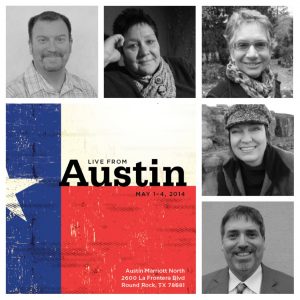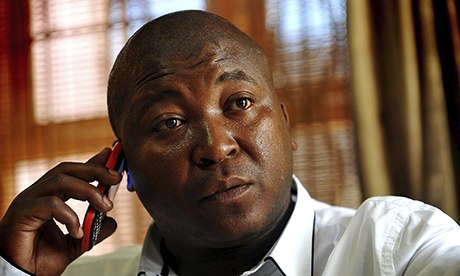
Damita Boyd explores the value of learning from other disciplines, developing national standards and shared bodies of exemplar work, and acting on what we already know to improve interpreter education programs.
From time to time I have heard it said that Interpreter Education Programs are the new functional “gatekeepers” of the sign language interpreting profession. That is, with more interpreters learning ASL and interpreting in academic settings, rather than based on their proximity to the Deaf community, it is navigating successfully through the classroom experience that first determines who will have the opportunity to become a sign language interpreter.
In several StreetLeverage articles, authors give an account of, or allude to, the shift from community-centered and community-made interpreters to interpreters trained in schools. Rico Peterson, in New Lamps for Old: Apprenticeship in Sign Language Interpreting, gives an account of life before this shift; he describes gated (invitation-only) opportunities for real-world learning allowed only by one’s relationship-in-good-standing with the Deaf community. In Sign Language Interpreters – Complicit in a Devil’s Bargain?,” Dennis Cokely gives an especially pointed account of the negative side-effects of communication access legislation, including the Deaf community’s loss of the locus of control for sign language instruction and the provision of interpreting services. The power shift from the heart of the Deaf community to community colleges, colleges, and universities has been a reality of sign language interpreter education for about forty years. We can’t go back, but perhaps we can find a new way forward. I’d like to briefly consider how the “gatekeeper” role might act as a nudge for greater cooperation, greater sharing, and standardization of curriculum, assessments, and outcomes.
The Measurement of an Interpreter
If interpreter education programs truly function as gatekeepers, whether by design or by default, shouldn’t we know what the gates (skills and competencies) are? What are the true skills and measures that decide whether students will end up on this side of the gate or that? Who decides what skills and competencies should be prioritized; and are we effectively designing our programs, our courses, and our teaching and learning from one moment to the next to prepare students for the world that awaits them?
What I am saying here is not particularly new. Several months ago I was preparing to attend a symposium for sign language interpreter educators. Homework for the symposium included reading Toward Competent Practice: Conversations with Stakeholders (Witter-Merithew & Johnson). The stakeholder conversations highlighted in this 2005 publication resulted in recommendations for the design of an “ideal” interpreter education program, and a comprehensive list of entry-to-practice competencies. Ever heard the adage that starts, “If I lived half as well as now I know how already…?” If we lived half as well as we know how already, there would be at least as many Deaf faculty in interpreter education as there are non-deaf, and we would be nearer to the implementation of standardized competency requirements that assess critical thinking, human relations competencies, and professionalism, in addition to interpreting.
I do know that sign language interpreter education programs are filled with dedicated faculty and staff who are genuinely committed to making interpreting program graduates as competent as possible, given limited time, limited resources, and often limited exposure to Deaf culture and language. I have no doubt that individually there are educators and programs working in compelling and creative ways (or maybe even just good old-fashioned effective ways) in order to meet the needs of the community where they live. If we were to find an effective way to knit our efforts together, I believe that each of our programs would be enriched and a small step toward a national understanding of entry-to-practice competency might be taken.
I am less interested in classroom practice and methodology at this point—important though they are—than I am in understanding the priorities programs seek to fulfill. Most are working on language. Advanced ASL fluency prior to admittance to an interpreter education program is rare, and depending on college entrance requirements, knowledge of the English language may need to be bolstered. What other skills are addressed by subsuming their instruction within the language/interpreting lesson? Which skills are reinforced by the practices of the program? What skills are considered rudimentary? How do programs build on and strengthen those skills?
The Value of Cross-Pollination
I have been working with faculty members from two disciplines outside of my own and in each case I have learned that there are approaches that I had not considered that if tried, might fit in interpreter education. The nursing program has extensive experience in designing, observing, and evaluating clinical practice. The concept that they hold for a successful interaction is specific. Working with the nursing department has helped me understand more clearly how I might be equally specific in structuring performance expectations for interpreting students during interactive interpreting. The Education program has mastered their process for field placement. Viewing their process and reusing some of the resources that they have in place not only saves valuable time and energy, it reminds me that longer-standing fields have had time to try, fail, build, and re-build, while the formal training of sign language interpreters is still relatively young.
I do not doubt that the roadmap provided by Witter-Merithew & Johnson and the 400 participants in their Conversations with Stakeholders project holds true. Because the conversation is centered around an ideal education program, some of the recommendations—given where we are now—read like the stuff of science fiction (separate exit expectations for two-year and four-year programs each followed by a formal induction system, apprenticeship, p. 120). Of course, we did put a man on the moon….
Would it be possible to poll interpreter education programs to determine which “ideal” recommendations are already in place? Do we all have similar measures to determine if our curriculum and teaching strategies are working? Because the list of recognized competencies is extensive, how can we prioritize those competencies and sequence instruction? Can we clearly identify priority objectives, explicit and implicit, and talk about their achievement? Perhaps our national agenda needs to start in regional work-groups in order to be more manageable?
Where Do We Go From Here?
Certainly, there are initiatives that are pulling sign language interpreter educators together. The National Interpreter Education Center and six Regional Interpreter Education Centers are working to provide support and outreach to sign language interpreter education programs throughout the country. Each of the regional centers hosts activities designed to further the profession of sign language interpreting and interpreter education. One initiative, the Outcomes Circle, established by the National Interpreter Education Center based at Northeastern University, will share the results of the collaborative work of 15 interpreter education programs in a study of effective practices. The TIEM Center exists as a research, resource, and networking hub that has served as the launching point for significant collaboration and research in the field of sign language interpreter education. Professional organizations, conferences, symposia—all are geared toward networking and contributing to the field of sign language interpreting through education.
As a consumer of these entities, someone who measures the success of my efforts in student “aha” moments and news of EIPA scores and NIC results; in my ability to translate theory and shareshop ideas into a cohesive program of instruction; and in the vivaciousness or deadpan silence in my last class—I have one or two thoughts about where I might start, were I to have my own sign language interpreter educator collective.
Outcomes Tied To Standards
First, I need an anchor. As we design interpreter education programs to lead students to specific competencies and outcomes, I would like to see those outcomes overtly tied to a single, clear standard of performance. The most accessible, identifiable, common professional standard that we share is the RID/NAD Code of Professional Conduct. Each tenet represents a guiding principle fundamental to the role of sign language interpreter. Each tenet is also a broad heading under which specific knowledge, skills, and behaviors might be placed. Our challenge as educators and researchers would be to define how each of these standards might be addressed, and to align our teaching to ensure that students have the opportunity to become competent and knowledgeable in each area. Perhaps there are sign language interpreting programs that do this already. For me, this is a new idea. I recognize that this means that when the CPC changes, educational programs will be affected. However, if we as a profession share values, expectations, and standards, I think that sharing in the evolution of those values, expectations, and standards is a powerful activity.
A Corpus Of Exemplar Work
Second, I need a model of expectation for the different phases of learning. I continually find that evaluating student work is a challenge. After several years of teaching, I have become comfortable with my ability to put a grade on an assigned interpretation. I can talk about it. I can justify it. I can get agreement from the student and from a colleague down the hall. What I lack is the ability to measure my students’ work against a body of work generated by students (interpreters) of similar competency. I also struggle to mentor new interpreter educators as they are faced with assigning grades for student work, particularly when their paradigm is largely framed by the work of professional sign language interpreting peers with whom they have become familiar. To be sure, there is a learning curve in any new endeavor. Still—a model, a level of expectation for what students in each phase of the education process should be able to accomplish would be very helpful.
In order to develop a corpus of exemplar work at all levels of student development, we would need broad stakeholder involvement. Teachers would need to seek permission from students and institutions and be willing to engage in active research. Students, for the sake of education, would need to be willing to allow us to share and compare their work. Or perhaps, in the service of shaping the professionals who will work beside them, professional interpreters would be willing to share the work of their past. We would need consumers involved to tell us what really works and what doesn’t in message transfer and, where warranted, in professional interaction.
Act on What We Know
I’ll stop there, and point back to the adage, “If I lived half as well as now I know how already…?”. There is so much good work that has been done in the last forty years in American Sign Language and sign language interpreting research, in bringing evidence-based practices and pedagogical awareness to sign interpreter education; it is to our advantage to actively participate in it.
How can we take what we know and take the next necessary steps toward collaboration, implementation, and standardization?












